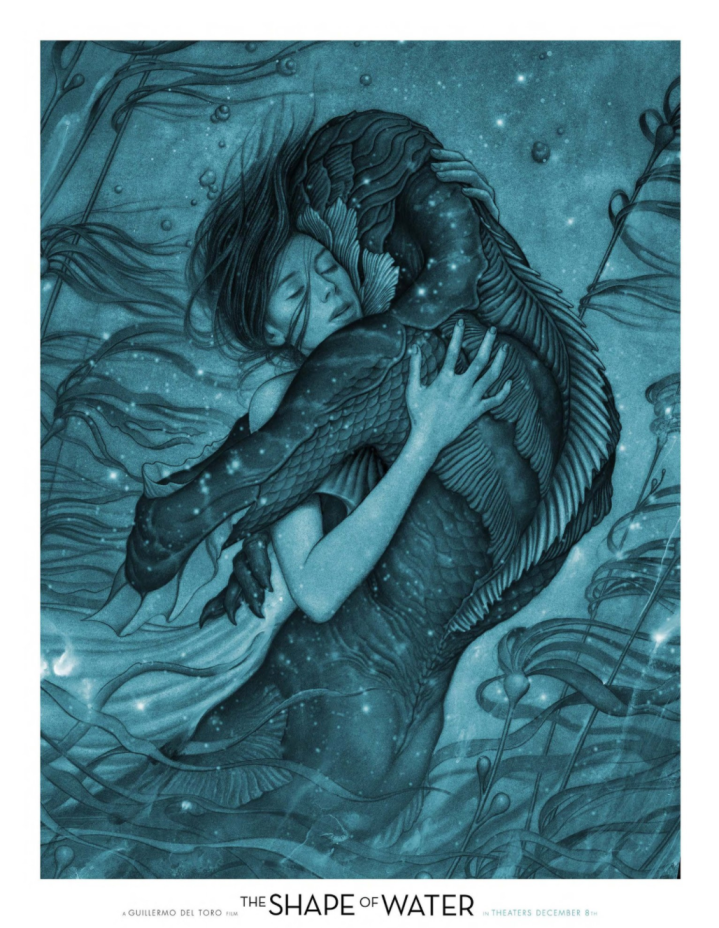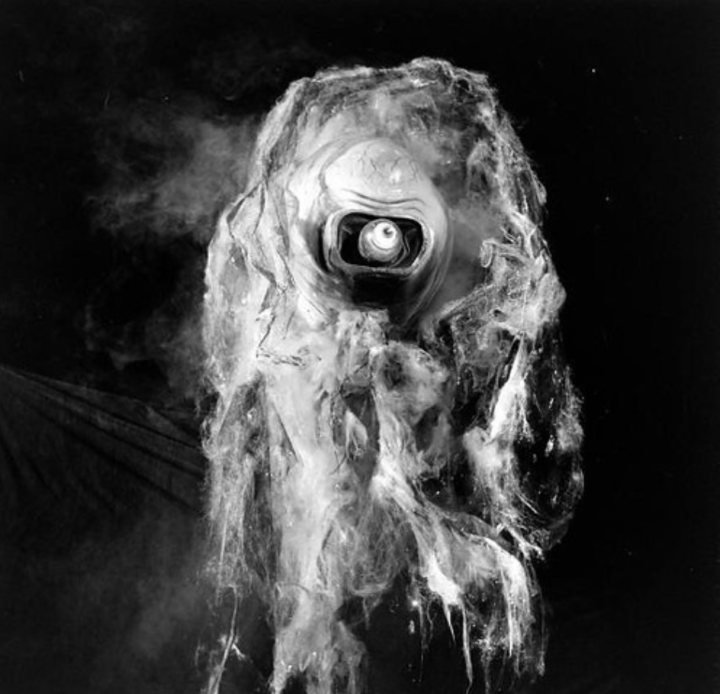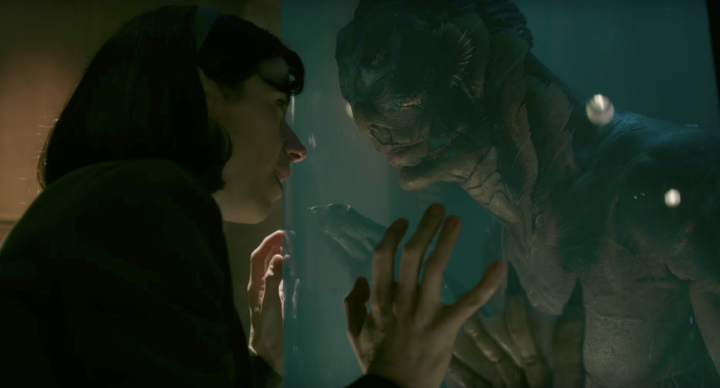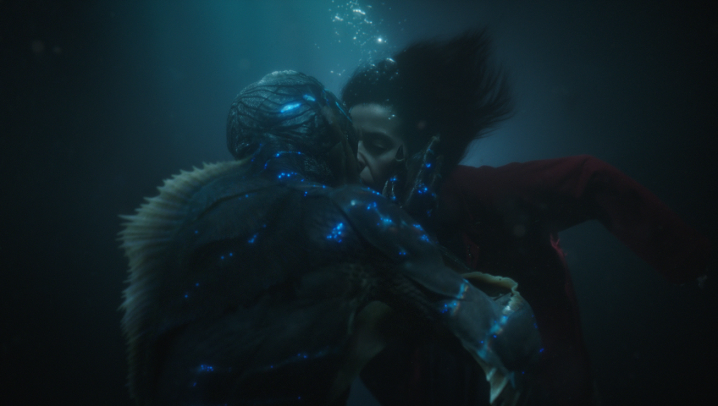Back in 1996, I sat down and watched an old worn out VHS tape. The film on the tape told of a crew descending into the Amazon to hunt a mysterious aquatic beast, a quest that takes them to the very heart of fear.
It was called Creature From The Black Lagoon, and it was my first horror film. The mysterious gill man haunted my nightmares for many years, and remains to this day one of the few movies to truly scare me. At the time I never thought such a creature could do anything else but make me tremble. Flash forward some twenty two years later and a similar gill man proved me wrong.

The Shape of Water Made Me Feel Pity…

Monster movies have changed a lot in the seventy some years between Creature and Shape. Had someone proposed Del Toro’s story of love between a deaf woman and an amphibious man back in the 40s, it would have no doubt been dismissed as ludicrous, perhaps even scandalous. But the world has changed a lot since the 40s, so have we, and of course, so have our movies. So how does Del Toro’s recent film reflect the gradual changes creature features have gone through over time?
Repulsion Or Wonder

One of the most common elements of the classic Universal creature features was the monster being portrayed as something repulsive. In the original film, little talk is given to the creature’s unique nature and scientific value, and an effort to contain it for study backfires when the monster breaks free of a cage and attacks the crew. The 40s were a time of scientific exploration, but nature was at the time thought of as a vast, unfriendly place. It cannot be controlled or tamed. The only way to win is to fight it to the death. We didn’t yet understand how fragile it truly was.

The transition period for creature features can probably be traced to a new trend in science fiction that actually started a year prior to Creature from the Black Lagoon, with a little film called It Came From Outer Space. Though a horror film, the monsters in this movie turn out to be benevolent explorers who depart Earth peacefully, promising one day to return when humanity is ready. While creatures were used as protagonists in other stories since then, It Came From Outer Space was unique in its deliberate effort to make the aliens hideous. Still, it took the characters time to realize this. When the leading lady in this film first sees the visitors, she screams.

When Elisa, played by Sally Hawkins, first encounters the gill man, her reaction isn’t one of repulsion, but wonder. She immediatly takes a liking to the mysterious creature, bringing him hardboiled eggs to eat and gradually teaching him American sign language. In an unusual twist, it’s the creature rather than Elisa who’s initially fearful. Since the gill man had been subject to abuse by people before, Elisa has to work hard in order to prove to the creature that she’s trustworthy. A long time ago, it was always the girl who screamed and ran away afraid. In Shape, it was the monster’s turn to be repulsed by something he doesn’t understand.
Who Is Vulnerable

Another way the two stories differ is who is in control. Creature From The Black Lagoon puts its human characters in a rut. They’re in the middle of the Amazon, wading deep into the creature’s territory with nothing but a small boat as their sanctuary. Even then, the boat offers little protection when the creature decides to take a stroll on the deck in search of victims. From the start, the film places the heroes at a disadvantage. The Creature is the one in control, and the heroes are forever at his mercy.

A noticeable change to this trope came with a more innocent creature feature, Steven Spielberg’s ET. The title character in this film is not only a short and non-imposing figure. He’s also a stranger in a strange land, surrounded by technology he doesn’t understand in a civilization he doesn’t know. Like the explorers in the Amazon, ET is frightened and alone. Lucky for him, some of the local children decide to lend him a helping hand while he’s far from home. Still, ET was made to be cute and innocent, never dangerous.

Like ET, The Shape of Water’s gill man finds himself in a dire predicament. The amphibious creature spends much of his time in the confines of water tanks and bathtubs, the only thing keeping him alive outside of his native environment. The gill man here is aided in his survival by the sympathetic human cast, them providing his only lifeline on his long journey back home. In effect, Del Toro inverts the position of the characters from Creature from the Black Lagoon. To his gill man, Baltimore is the Amazon, and Elisa’s bathtub is his only vessel in a vast, unfriendly jungle.
Heroes or Villains

Of course the biggest change in the genre is who is the hero and who is the villain. Make no mistake. The Creature in the 1945 Universal film is the antagonist. He ruthlessly kills off much of the cast, and though he is infatuated with Kay, played by Julia Adams, his abduction of her nearly results in her death when he takes her to the Amazon’s murky depths. Only Dr. Reed’s efforts save her from a life of imprisonment and torment. Thus was the case with most monster movies. The beast was a blight that harmed others, and the only way to achieve victory was for the hansom lead to destroy them.

Michael Shannon’s character of Strickland could have easily been the heroic role if this were a film from the 40s or 50s. He’s a military man, has a wife a few kids, and has a strong, imposing presence that would make you feel confident if this guy was in your corner. Unfortunately for the heroes, Shannon isn’t in their corner. Rather, he’s backing them into one.

Strickland is a straight up sadist, torturing the creature for his own pleasure. This helps us right away identify who the hero is. The creature’s pain helps us empathize with him and want to see him succeed, while Strickland grows increasingly violent and impulsive as the film goes on. By the end, Strickland isn’t just torturing the creature, but crashing through anyone who gets in his way, including Elisa.
Perhaps the starkest contrast is the treatment of the film’s lead by their respective monsters. The Creature in the original is more of a stalker, and his attempted possession of Kay is more selfish than romantic. The Creature takes Kay from a world she knows and loves, away to a place she neither understands or fits. Elisa on the other hand is much like the gill man herself. She’s an outsider, and when she meets her new aquatic friend, she sees a chance to escape to where perhaps she can find a sense of belonging. The Shape of Water tells of a mutual infatuation, one that ends with the creature offering Elisa a new life. Though he may be a little more scaly than Richard Carlson, it’s pretty unmistakable who Shape of Water’s leading man is.
In Closing

Creature from the Black Lagoon came from a time of fear. World War II had just ended, the atomic age had begun, and much of the moviegoing public was fearful of another outside enemy on the horizon. The Creature represented those fears, and was thus the enemy that needed to be destroyed. The Shape of Water on the other hand reflects a more modern sensibility. The gill man is an outsider, and in this day and age, it’s generally more accepted that outsiders are something to be not feared but understood, and that perhaps the greatest enemy we face is our own shortsightedness.
Ironically, it was Creature from the Black Lagoon that helped spawn shape of water. Del Toro has long cited the film as a favorite, but was always saddened when Kay and the Amazonian beast didn’t walk away hand in hand. When approached to direct a remake of Black Lagoon, Del Toro an ending in his version where the monster and the girl would fall in love, which Universal rejected. But Del Toro got the last laugh, creating a motion picture that earned Oscars for Best Picture and Best Director, and finally gave the Mexican director his idea of a happy ending.

The Shape of Water in many ways represents the antitheses of the genre’s original intentions. Rather than evoking repulsion, it evokes wonder. Instead of putting people in a tight spot, it puts us in power. And instead of creating a creature to be hated and feared, it creates a character to be beheld, appreciated, even loved. The creature features of old shouldn’t be done away with entirely. There should and will always be good old fashioned bloodbaths perpetrated by various slimy or scaly terrors. But Del Toro’s latest effort shows how versatile creature features have the power to be, and that it was honored with Best Picture stands as a long deserved validation for one of the most beloved genres in cinema.
